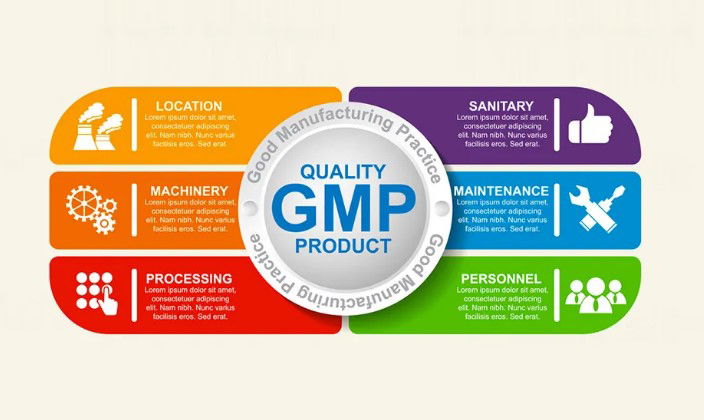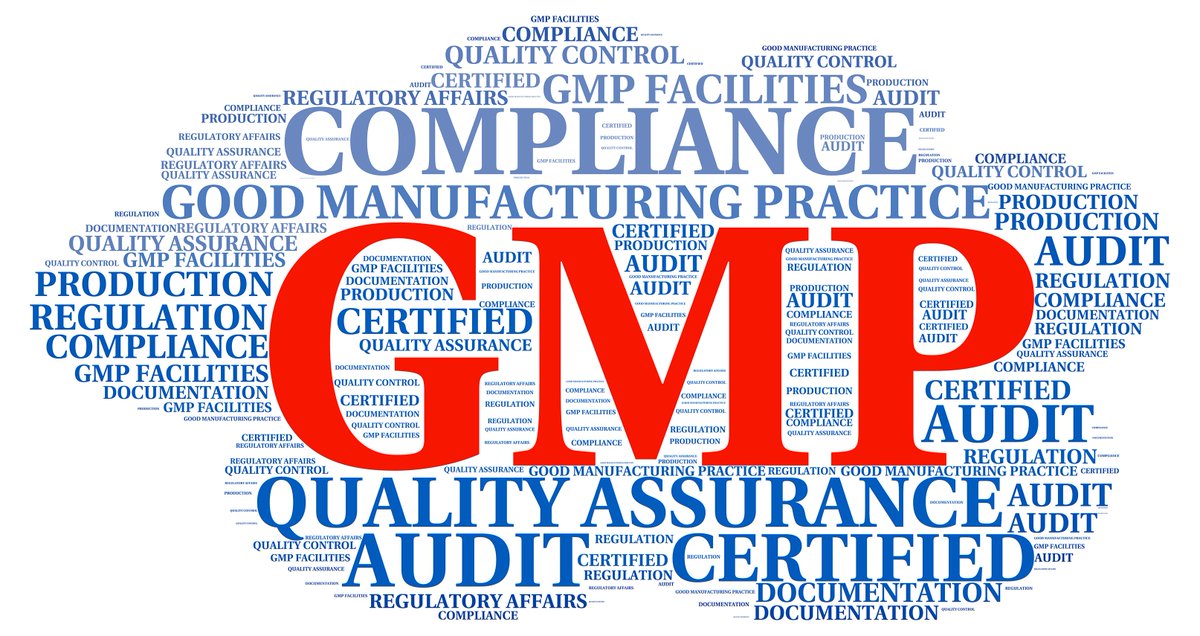ISO 9001 vs. Good Manufacturing Practices (GMP): A Comprehensive Comparison
In the world of manufacturing and quality management, two prominent standards—ISO 9001 and Good Manufacturing Practices (GMP)—play critical roles in ensuring product quality, safety, and consistency. While both are designed to uphold high standards, they differ significantly in scope, application, and focus. Understanding these differences is crucial for organizations operating in regulated industries, particularly those involved in manufacturing, pharmaceuticals, food, and cosmetics.
This article provides a comprehensive comparison of ISO 9001 and GMP, highlighting their unique features, requirements, and implications for businesses.
Overview of ISO 9001
ISO 9001 is an international standard that sets out the criteria for a quality management system (QMS). It is part of the ISO 9000 family of standards, which focuses on various aspects of quality management. ISO 9001 is the only standard in the family that can be certified, and it is applicable to any organization, regardless of its size, industry, or products.
The primary objective of ISO 9001 is to ensure that organizations consistently meet customer and regulatory requirements by following a structured approach to managing quality. The standard emphasizes continuous improvement, customer satisfaction, and the engagement of top management in the quality management process.
Click Here to Download Readymade GMP, ISO 9001, ISO 14001, ISO 22000, ISO 45001, FSSC 22000 HACCP & Integrated Management Systems (IMS) Templates.
Key Features of ISO 9001
- Process-Based Approach: ISO 9001 promotes a process-based approach to quality management, where the organization identifies and manages interrelated processes to achieve desired outcomes.
- Customer Focus: The standard emphasizes the importance of understanding customer needs and striving to exceed their expectations.
- Leadership and Engagement: ISO 9001 requires top management to demonstrate leadership and commitment to the QMS, ensuring that quality objectives align with the organization's strategic direction.
- Risk-Based Thinking: The standard encourages organizations to identify risks and opportunities that could affect the QMS's ability to deliver consistent quality.
- Continuous Improvement: ISO 9001 fosters a culture of continuous improvement, requiring organizations to regularly assess and enhance their processes, products, and services.
Overview of Good Manufacturing Practices (GMP)
Good Manufacturing Practices (GMP) are a set of regulations, guidelines, and practices designed to ensure that products are consistently produced and controlled according to quality standards. GMP applies primarily to industries where product safety and quality are paramount, such as pharmaceuticals, food, and cosmetics.
GMP regulations are typically enforced by government agencies, such as the U.S. Food and Drug Administration (FDA) or the European Medicines Agency (EMA). These regulations cover various aspects of manufacturing, including hygiene, equipment, facilities, personnel, and documentation. The goal of GMP is to minimize risks involved in production that cannot be eliminated through testing the final product.
Click Here to Download Readymade GMP, ISO 9001, ISO 14001, ISO 22000, ISO 45001, FSSC 22000 HACCP & Integrated Management Systems (IMS) Templates.
Key Features of GMP
- Regulatory Compliance:GMP is a regulatory requirement enforced by government agencies, making it mandatory for industries such as pharmaceuticals and food production.
- Focus on Safety and Quality:GMP is specifically designed to ensure that products are safe for human consumption or use, with stringent controls over manufacturing processes.
- Detailed Documentation:GMP requires comprehensive documentation to trace every step of the manufacturing process, ensuring transparency and accountability.
- Hygiene and Facility Standards:GMP mandates strict hygiene practices, facility design, and environmental controls to prevent contamination and ensure product safety.
- Personnel Training: GMP emphasizes the need for well-trained personnel to perform manufacturing tasks according to established protocols.
Key Differences Between ISO 9001 and GMP
While both ISO 9001 and GMP aim to ensure product quality, they differ in several key areas:
Scope and Applicability
- ISO 9001:ISO 9001 is a general standard applicable to any organization across various industries, focusing on the overall management of quality processes. It is not industry-specific and can be implemented by organizations of any size.
- GMP: GMP is industry-specific, primarily targeting industries like pharmaceuticals, food, and cosmetics, where product safety and quality are critical. It is a regulatory requirement, meaning compliance is mandatory for companies in these sectors.
Focus and Objectives
- ISO 9001: The primary focus of ISO 9001 is on customer satisfaction and continuous improvement. It aims to ensure that organizations consistently meet customer and regulatory requirements by managing quality processes effectively.
- GMP: GMP's main objective is to ensure the safety and quality of products by controlling manufacturing processes and preventing contamination or errors. It is heavily focused on product safety and regulatory compliance.
Click Here to Download Readymade GMP, ISO 9001, ISO 14001, ISO 22000, ISO 45001, FSSC 22000 HACCP & Integrated Management Systems (IMS) Templates.
Regulatory vs. Voluntary
- ISO 9001: ISO 9001 is a voluntary standard. Organizations choose to implement it to demonstrate their commitment to quality management and to gain a competitive advantage. Certification is optional but widely recognized as a mark of quality.
- GMP: GMP is a regulatory requirement enforced by government agencies. Compliance is mandatory for companies in regulated industries, and failure to comply can result in legal penalties, product recalls, and loss of market access.
Documentation and Record-Keeping
- ISO 9001: ISO 9001 requires documentation of key processes, procedures, and records, but it is generally less prescriptive about the level of detail. The focus is on ensuring that processes are effective and that records are maintained for traceability.
- GMP: GMP requires detailed and comprehensive documentation of all manufacturing processes, including batch records, standard operating procedures (SOPs), and quality control records. This documentation is essential for regulatory compliance and product traceability.
Hygiene and Facility Standards
- ISO 9001: ISO 9001 does not specifically address hygiene or facility design. While it requires organizations to maintain suitable working environments, it does not mandate specific hygiene practices or facility layouts.
- GMP: GMP includes strict requirements for hygiene, facility design, and environmental controls to prevent contamination and ensure product safety. These standards are critical in industries where product purity is essential.
Risk Management
- ISO 9001: ISO 9001 incorporates risk-based thinking into its framework, encouraging organizations to identify and address risks and opportunities that could impact the QMS and product quality.
- GMP: While GMP does involve risk management, it is more focused on preventing contamination, errors, and product defects through strict process controls and adherence to established protocols.
Click Here to Download Readymade GMP, ISO 9001, ISO 14001, ISO 22000, ISO 45001, FSSC 22000 HACCP & Integrated Management Systems (IMS) Templates.
Integration of ISO 9001 and GMP
Many organizations in regulated industries choose to integrate ISO 9001 and GMP to enhance their quality management systems. By doing so, they can achieve the broader quality management benefits of ISO 9001 while ensuring compliance with the stringent safety and regulatory requirements of GMP.
Benefits of Integration
- Comprehensive Quality Management: Combining ISO 9001 and GMP allows organizations to create a robust quality management system that addresses both customer satisfaction and regulatory compliance.
- Enhanced Risk Management: Integrating the risk-based approach of ISO 9001 with GMP's process controls can help organizations better manage risks throughout the manufacturing process.
- Streamlined Documentation: While GMP requires detailed documentation, integrating ISO 9001 can help organizations streamline their record-keeping processes and reduce redundancy.
Challenges of Integration
- Complexity: Integrating two standards can add complexity to the quality management system, requiring careful planning and coordination.
- Resource Intensive: Maintaining compliance with both ISO 9001 and GMP may require additional resources, including training, documentation, and auditing.
Conclusion
ISO 9001 and GMP are both essential standards for organizations committed to quality, but they serve different purposes and apply to different industries. ISO 9001 provides a broad framework for quality management that can be applied across various sectors, while GMP focuses on ensuring the safety and quality of products in regulated industries. By understanding the differences between these standards, organizations can make informed decisions about which to implement and how to integrate them to achieve the highest levels of quality, safety, and customer satisfaction.
Click HERE to download or any of the following documents:
ISO/IEC 17025 Laboratory Management System Implementation Kit
HACCP Implementation Kit
ISO 9001 Quality Management Systems (QMS) Implementation
ISO 22000 Food Safety Management Systems (FSMS) Implementation
Food Safety Systems Certification (FSSC) 22000 v5 Implementation
ISO 14001 Environmental Management Systems (EMS) Implementation
ISO 45001 Occupational Health & Safety Management Systems (OH&SMS) Implementation
ISO 50001 Energy Management Systems (EnMS) Implementation
Integrated Management Systems (IMS) Implementation
Production, Quality Control / Equipment Maintenance Kit
Lean Six Sigma
Lean Management/Manufacturing
Six Sigma Kit
Supplier Quality and Compliance Management (SQCM) Kit
Risk Management
Industrial Health, Safety & Environmental Management (HSE) Kit
Process Manuals




